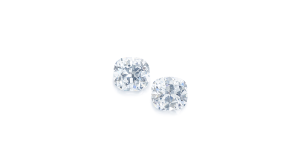is saying goodbye.
The company announced that it is officially closing its , known as Lightbox, in a move that confirms its allegiance to traditional stones; the diamond miner had announced last year that it would no longer sell its own man-made gems. De Beers is considering the sale of some of the business’s inventory, as well as other assets, as a result, Bloomberg .
Though the diamond miner had the technology to make synthetic stones for decades, De Beers only used those gems for industrial purposes, Reuters . The brand changed its tune in September 2018, when it started Lightbox amid an increased demand for man-made . With the endeavor, De Beers was aiming to make consumers see a strong distinction between traditional and , as well as sell the lab-grown gems at a discount to its fellow producers, according to Bloomberg.
Upon its launch, De Beers had its gems priced at $800 a carat, well below the market value. Now, though, prices of synthetic diamonds have plummeted 90 percent at wholesale, according to a from the brand, marking a stark divergence from the price of traditional gems.
“The persistently declining value of lab-grown diamonds in underscores the growing differentiation between these factory-made products and natural diamonds,” Al Cook, the brand’s CEO, said the press release. “The planned closure of Lightbox reflects our commitment to natural diamonds.”
The chief executive also noted that the competition for man-made diamonds has increased as of late, thanks to low-cost production in China. In the U.S., meanwhile, supermarkets that sell jewelry with lab-grown gems have driven down prices, according to Cook.
Lab-grown diamonds have been around for quite some time. The synthetic gems first came onto the scene back in 1954, when GE used a technique called High Pressure, High Temperature (replicating how diamonds are formed inside the earth) to successfully create them in a laboratory. The latest lab-grown obsession, though, has shaken up the diamond industry, with some people seeing the man-made creation as a threat to diamonds in general. Other consumers, meanwhile, have embraced the trend: Back in 2022, more than a third of engagement rings had a synthetic diamond, according to a survey from But as prices continue to drop, we may have more shake-ups in the jewelry industry yet.
Authors
-

Nicole Hoey
Digital Editor
Nicole Hoey is Robb Report’s digital editor. While studying at Boston University, she read, wrote and read some more as an English and journalism major. A class taught by a Boston Globe copy editor…
Credit: robbreport.com










